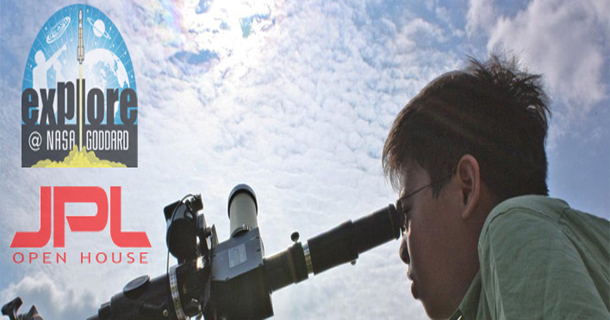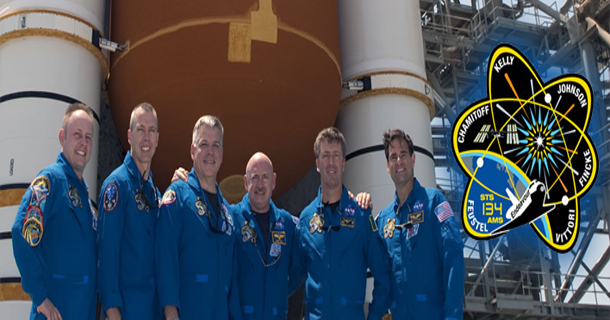Lighting up the predawn Kazakhstan sky, a Russian Soyuz rocket carrying a veteran Russian cosmonaut and two NASA astronauts roared to life and vaulted into orbit Tuesday, kicking off a two-day flight to the International Space Station.
Station veteran Fyodor Yurchikhin and NASA astronauts Douglas Wheelock, a shuttle veteran, and rookie flight engineer Shannon Walker lifted off aboard the Soyuz TMA-19 spacecraft at 2:35:19 p.m. PDT Tuesday (3:35:19 a.m. Wednesday local time) from Yuri Gagarin's launch pad at the Baikonur Cosmodrome in Kazakhstan.

The Soyuz TMA-19 spacecraft lifts off from the Baikonur Cosmodrome in Kazakhstan.
(Credit: NASA TV) Riding atop a torrent of fiery exhaust from its multiple first-stage rocket engines, the Soyuz quickly climbed away from the launch pad and arced away to the east through a clear, dark sky.
There were no apparent problems during the climb to space. Shutdown and separation of the first-stage strap-on boosters was clearly visible on NASA television, and all three crew members appeared relaxed and in good spirits, as the rocket accelerated.
Eight-and-a-half minutes after launch, the spacecraft slipped into its planned preliminary orbit with a high point of 161 miles and a low point of 134 miles. A few moments later, its solar arrays and antennas deployed, as planned, to complete the ascent.
"OK, guys, all the best to you," a Russian flight controller radioed in an interpreted feed. "That's it."
Including manned space shuttles and Soyuz capsules, along with unmanned Russian, European, and Japanese cargo ships, this was the 100th launch supporting space station operations since assembly began in 1998.
Walker, a private pilot and wife of shuttle astronaut Andrew Thomas, was trained to serve as Soyuz flight engineer, assisting Yurchikhin in critical phases of flight.

Soyuz commander Fyodor Yurchikhin, left, and flight engineer Shannon Walker, right, moments after reaching orbit.
(Credit: NASA TV) "Only a handful of us have been trained as the co-pilots on the Soyuz, and it's quite an extensive training process," Walker said in a NASA interview. "I've spent the better part of the last three years over in Russia, working with my Russian colleagues and my Russian instructors to learn how to be the co-pilot, so it's quite an endeavor."
A member of the Ninety-Nines International Organization of Women Pilots, Walker carried a watch into space that was worn by Amelia Earhart during a solo flight across the Atlantic Ocean. In a NASA news release, Walker said she hoped that by honoring the legendary flier, "people will become interested in the continuing story of women in aviation, and perhaps draw some new pilots to the field."
If all goes well, Yurchikhin and Walker will oversee an automated approach to the International Space Station, docking at the Zvezda command module's aft port around 3:25 p.m. Thursday.
After leak checks, hatches will be opened, and Yurchikhin, Walker, and Wheelock will be welcomed aboard by Expedition 24 commander Alexander Skvortsov, Mikhail Kornienko, and Tracy Caldwell Dyson, who were launched to the station April 2. This will be the first time a long-duration station crew has included two women.
Yurchikhin, Walker, and Wheelock, who plan to spend 164 days in space, are replacing Expedition 23 commander Oleg Kotov, Timothy Creamer, and Soichi Noguchi, who returned to Earth two weeks ago aboard the Soyuz TMA-17 spacecraft after five-and-a-half months in space.
The new additions, in turn, will form the core of the Expedition 25 crew when Skvortsov, Kornienko, and Caldwell Dyson depart in late September.

Space station flight engineer Mikhail Kornienko, left, commander Alexander Skvortsov, center, and NASA flight engineer Tracy Caldwell Dyson, right, monitor the launch of the Soyuz TMA-19 spacecraft in a video feed from Houston.
(Credit: NASA TV) "Our increment is going to be pretty busy," said Wheelock, who will command Expedition 25. "We'll see a fairly long gap for the next shuttle flight to arrive, and so we have a fair amount of EVAs, or spacewalks, we'll be doing as well. We have three Russian EVAs. Fyodor and our Russian colleagues will go outside and be doing some configuration on the outside of the Russian segment, and we'll also have two U.S. EVAs in August to do the very same thing, to outfit the station to be a little more independent of the heavy lift capability that the shuttle was bringing to the station."
Only two more shuttle flights currently are planned, one with Discovery and one with Endeavour. Discovery is officially targeted for launch September 16, but the flight is expected to slip to around October 29 because of payload issues. Endeavour currently is targeted for launch in late November, but that flight is expected to slip to February because of payload and launch conflict issues.
NASA managers are lobbying the Obama administration for permission to fly one additional shuttle mission next June to deliver critical equipment and supplies. A decision is expected around the end of the month.
"It's actually bittersweet to see the shuttle go," Wheelock said. "But it's really an exciting time as well, because we're also going to be the first increment to really go to full utilization of the space station as an orbiting laboratory.
"All of our international partners--we've pulled together and done things in the engineering world that only 10 years ago seemed to be impossible. Did we think we'd get to this point sooner? Yes. Did we think we'd get to this point cheaper? Yes...We had big dreams and visions. I think that now we're just getting to that point where we're going to begin to really see the return on investment for us."
Looking beyond the space station, Bill Gerstenmaier, director of space operations for NASA, told the crew to give some thought to how the station might be used to help pave the way for future missions into deep space.
"I'd like to congratulate the crew on being ready and completing their training," Gerstenmaier told the astronauts in a preflight meeting. "That's a tremendous accomplishment. The teams in Houston, Canada, and Japan are all ready to support your efforts. Have a good time on station, we look forward to your activities and work...And I have a special request for you: ...in addition to your normal tasks and things [for] which you were trained, think about how [the] station can be used for the future and as a stepping stone to new and bigger things."





 1:50 AM
1:50 AM
 Nasa Information
, Posted in
Nasa Information
, Posted in






 For the first time, an orbiter was named through a national competition involving students in elementary and secondary schools. They were asked to select a name based upon an exploratory or research sea vessel. In May 1989, President George Bush announced the winning name.
For the first time, an orbiter was named through a national competition involving students in elementary and secondary schools. They were asked to select a name based upon an exploratory or research sea vessel. In May 1989, President George Bush announced the winning name. Because of Endeavour's excellent performance, NASA decided to extend the flight two days to complete more mission objectives and allow the crew enough time to prepare for landing.
Because of Endeavour's excellent performance, NASA decided to extend the flight two days to complete more mission objectives and allow the crew enough time to prepare for landing.





